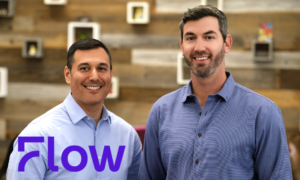In recent years, insurers have found an answer to this issue by partnering with agile and tech savvy insurtechs.
“I personally believe there is another option,” said Melbourne based technology expert Ashish Rajan, head of security and compliance with the talent management platform PageUp.
“The banks are already doing this by starting to open up neobanks,” said Rajan who also teaches a course in cloud security for the US-based SANS Institute and hosts his own podcast on cloud security issues.
Rajan said when banks, including in Australia, realized that their traditional structures were quite rigid and unable to move as fast as a new wave of online banks they started mini start-ups inside their own banks.
The tech expert said the big insurance companies, rather than form partnerships to overcome their digital disadvantages, could follow the banking industry’s lead.
“You have the agility of a start-up and you get to create products which are faster and more agile and offer more for the customer while still being part of the same organization,” he said.
This is a nuanced definition of neobanks and neoinsurers. Until now, authors who use the word neoinsurer in web articles generally deploy it interchangeably with the word insurtech. Many would agree with this 2019 interpretation of the term:
“I define neoinsurers as companies that offer fully-digitized insurance products to consumers or businesses, exclusively through digital channels, with end-to-end digital service delivery,” wrote Paul Morgenthaler a partner at CommerzVentures. He gave the US insurance company Lemonade and the German firm Getsafe as examples of neoinsurers. These firms fit the insurtech label just as easily.
However, by defining neoinsurers and neobanks as entities within bigger entities, Rajan could be redefining it and giving a name to a financial industry trend that is relatively new in Australia.
He said a good example of a neobank is the Melbourne based online bank called Up, also known as Up Banking, that was created by Bendigo & Adelaide Bank in 2018.
“Our banking industry has already started realizing that there is a gap here because they want to be fast but they’re not able to release products quickly because of their structure,” he said.
Rather than a partnership with a separate entity like an insurtech, Rajan said this alternative model for the insurance industry would see them establish pockets of mini start-ups inside their own organizations.
“Everything that needs a less rigid space and doesn’t need to be that regulated can be handed over to the start-ups and then they can disrupt the industry from that perspective,” he said.
Rajan said there are now numerous examples of neobanks in the US and the UK.
“Those banks recognized that something needed to change because they had the technology but the structure takes a while to change too,” he said.
Establishing neobanks was an answer to maintaining their competitive advantage while their company-wide digital journeys were taking place.
“And they’ve been able to do it,” added Rajan.
However, at the recent InsurTech Summit in Sydney, partnerships between insurers and insurtechs were seen as a growing trend.
“The theme is going to be Creating Value: Driving Growth Through Partnerships,” said Kanopi Cover CEO Nigel Fellowes-Freeman, referring to the VIP Lunch that his firm sponsored.
Fellowes-Freeman suggested that this insurance company mindset shift, from regarding insurtechs as competition to seeing them as partners, is now well established.
“That shift has happened and is happening at a board level in all these insurance companies,” he said.
The Kanopi boss said insurers understand that they can’t build everything themselves.
“So, their mindset is buy, build or partner – and that partnership is a really big part of their strategic play,” said Fellowes-Freeman.
The Melbourne-based insurtech expert said the insurance industry is entering a new collaborative phase. He expected parametric products to be an insurance area where insurer/insurtech partnerships could flourish.
“I think that some of the late legacy technology within the insurers will struggle to write that business because they don’t have the technology to be able to write it and so they’ll look to probably partner to deliver those new types of products,” said Fellowes-Freeman.
Source: Lumera








